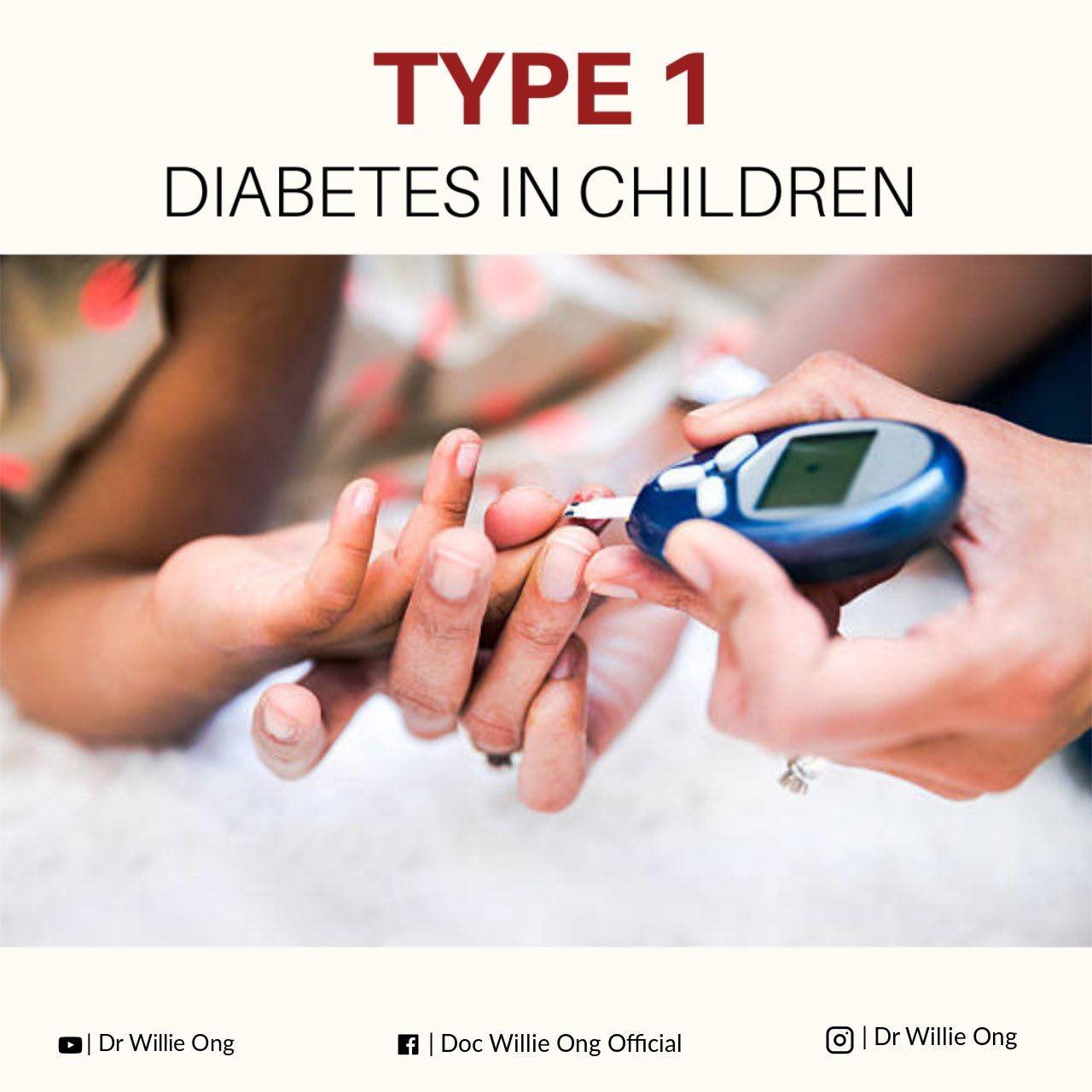By Doc Willie Ong
This is commonly known as juvenile diabetes. A condition in which the pancreas produces little or no insulin. Type 1 diabetes can be caused by a variety of reasons, including genetics and viruses. Type 1 diabetes is most commonly manifests in childhood, but it can also manifest in adulthood.
Despite ongoing research, there is no permanent treatment for Type 1 diabetes. This disease can only be controlled by insulin treatment. To avoid diabetes complications, treatment focuses on controlling blood sugar levels with insulin, food, and lifestyle changes.
There are a variety of tests that may be used to determine if the child is positive for type 1 diabetes. Type 1 diabetes is indicated by a fasting blood sugar level of 126 mg/dl or greater. A random blood sugar reading of 200 milligrams per deciliter (11.1 mmol/l) or greater indicates diabetes. The average sugar level for the previous three months is measured by a glycated hemoglobin (A1C) test.
What are the symptoms of type 1 diabetes?
The following symptoms of type 1 diabetes may suddenly occur:
1. Thirst increases
2. Urinating often
3. Bedwetting in children
4. Extreme hunger
5. Weight loss
6. Irritability and mood swings
7. Weakness and fatigue
8. Blurred vision
We must remember the 4T’s early symptoms for diabetes in children, which are Toilet, Thirsty, Tired, and Thinner.
What are the stages to Type 1 Diabetes?
Stage 1. Normal blood sugar antibodies, presence of antibodies that start to attack insulin-producing cells, and no symptoms yet.
Stage 2. Abnormal blood sugar levels, a presence of antibodies that cause damage to the pancreas but still shows no symptoms.
Stage 3. Abnormal blood sugar levels, and the 4T symptoms appear.
What are the possible complications of type 1 diabetes?
There could be blindness and loss of sight. The kidneys might fail, and there could be a stroke or a heart attack. And it is also possible to have impaired blood circulation. Which will result in non-healing wounds in the foot. Also nerve damage and amputations.
What are the treatments?
We can avoid the complications of Type 1 diabetes if we follow these rules:
- Insulin treatment.
- Frequent blood sugar monitoring.
- Eating healthy foods. Monitoring of food intake.
- Exercising regularly and maintaining a healthy weight.
What are the risk factors?
1. Family history of diabetes.
2. Age. There are two noticeable peaks. The first peak occurs in children between 4 and 7 years old, and the second is in children between 10 and 14 years old.
How do you manage type 1 diabetes?
A person with diabetes is at risk for depression and diabetes-related distress. It is helpful for us to open up to other people with type 1 diabetes. Learn about new development in diabetes and make sure to consult your doctor regularly.



